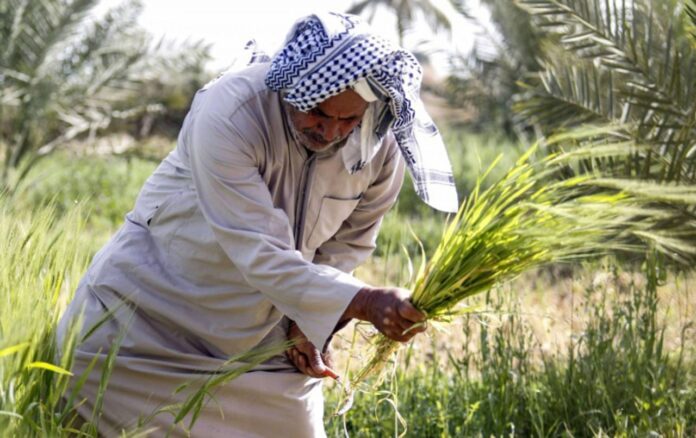Adnan Abdul-Amir Al-Zubaidi – Tikrit University, College of Political Science
Induction
Archaeologists confirm that the first habitat for agriculture was in Iraq, and in its northern regions in the Neolithic period, within the limits of (12 thousand years BC), according to the Zorzi caves in Sulaymaniyah, and the village of Jarmo, about (11 km) east of Chamchamal, and the village of Hassouna, which is located 35 km south of the city of Mosul, as well as agricultural villages in the sedimentary plain, such as ur, Arido, and AlWarka, Agriculture is one of the most important economic professions in any country, and its importance lies in the fact that agricultural production – both animal and plant – is the main source of food for any society, as well as providing job opportunities for a large number of the population, as the number of workers in the agricultural sector in Iraq – and according to the 1997 census – is about (950317) people, and by (6.19%) of the total economically active population in the year 2000, There have been conflicting opinions on the area of agricultural land in Iraq due to the lack of evidence of data and basic information to formulate any public policy, because there is no general population census for all of Iraq, and since the last population census in 1997, and for fifteen governorates only except the Kurdistan region, as some opinions refer to (30) million dunum, out of the total area of Iraqi land of (177,770) million dunum, which is: Iraqi arable land constitutes about 17% of the area of Iraq, which is a good percentage compared to much of the world of the South, for example, arable agricultural land in the Arab Republic of Egypt constitutes only 6% of the total area.
The contribution of the agricultural sector to the GDP – after 2003 – was estimated at (5%) according to the estimates of 2010, and in 2013 the relative contribution to the GDP of the agriculture, forestry, and the fishing sector was (9.3%), which shows the small contribution of the Iraqi agricultural sector to the GDP, The backwardness of agricultural development in Iraq, which is a manifestation of the structural imbalances suffered by the Iraqi economy in the past three decades, has led the Iraqi economic system to view the agricultural sector as a secondary sector, as it has made the agricultural sector suffer from external challenges (scientific and technological development) and internal challenges (lack of optimal utilization of agricultural resources and capacities, and security and political instability).
The agricultural sector is one of the most important economic activities that contribute to the national economy, and food security is linked to national security, as achieving food security depends mainly on the provision of food from local agricultural production, as well as the contribution of the agricultural sector to diversifying the economy and alleviating poverty, The development of the agricultural sector contributes to combating unemployment, reducing the volume of imports, developing and advancing society, and strengthening the national economy, and the national product is the safest and most reassuring of the health safety of the consumer compared to the importer because most diseases are related to food, food consumption, as well as the development of the agricultural economic sector, which is reflected positively on improving the environmental reality.










